When the United States entered World War I in 1917, it was poorly prepared for the challenges ahead. The American Expeditionary Forces (AEF) consisted of a measly 127,151 soldiers, a minuscule military compared to Britain's four million and France’s eight million. If the United States hoped to make an impact and have a seat at the peace table, it would have to radically expand its military and do so quickly. Thus began the history of Camp Shelby.
To train an army, a country needs military camps with adequate housing and supplies. Army General John J. Pershing, Commander of the AEF, was commissioned by President Woodrow Wilson to construct thirty training camps and cantonments throughout the United States—including Camp Shelby.
The US Army was determined to build a military camp in Mississippi, and no city was more eager than Hattiesburg. Initially, Hattiesburg was not on the list of potential locations. However, two physicians raised the city’s profile: Walter Crawford and George Austin McHenry. Crawford was a tireless booster for the Hattiesburg area. McHenry, the namesake of a nearby town he had founded in 1889, became close friends with General Leonard Wood when they served together in the Spanish-American War. Wood, who had led the Rough Riders in 1898 with Theodore Roosevelt as his second-in-command, commanded the Southern Department of the US Army in 1917. When Crawford and McHenry showed Wood what Hattiesburg had to offer and that preexisting facilities were already in prime condition to accommodate a military base, Wood was so impressed that he replaced the top choice, Meridian, with Hattiesburg. Once the land was acquired and construction of other necessary buildings underway, the facility was named Camp Shelby after the influential Revolutionary War leader, Isaac Shelby, who was the first governor of Kentucky. Military camps at that time were named by the state from which the soldiers were enlisted. The first soldiers to train there were from Indiana, Kentucky, and West Virginia.
The camp’s capacity was impressive for the time. It primarily consisted of tents, but it also had an electric light plant, bakery, bath house, post office, jail, community house, and an ammunition house. It could hold 36,000 soldiers at a time and would eventually train 50,000 troops from 1917 to 1918. When the war ended, Camp Shelby was shut down. Maintaining a military camp of that size was unjustifiable in peacetime, and many Americans believed that another world war would never happen.
From 1920 to 1938, Camp Shelby partially reopened to train the Mississippi National Guard. It fully opened in 1940 when the threat of a second world war loomed over the country.
After Japan attacked Pearl Harbor on December 7, 1941, America entered World War II, and Camp Shelby was transformed into a comprehensive training facility. The army spent $11 million to revitalize Camp Shelby. By 1941, the camp had bowling alleys, churches, restaurants, a community center, and a dance hall. It even included a German prisoner-of-war camp that could hold 2,500 prisoners. Such a revitalization effort not only benefited Camp Shelby’s facilities, but it also stimulated the economy of neighboring Hattiesburg. The Great Depression of the 1930s had crippled the economy of Mississippi, a state that was already the poorest in America. By 1941, Mississippi had still not recovered. But with the reconstruction of Camp Shelby and other training camps in the state, along with $64 million of federal funds for the war effort, Mississippi’s economy began to quickly recover.
Upwards of 750,000 Americans were trained at Camp Shelby from 1941 to 1946. Nine infantry divisions, several artillery brigades, and a tank destroyer unit were trained and mobilized at Camp Shelby. One of the most decorated regiments that trained at Camp Shelby was the 442nd Regimental Combat Team, also known as the Nisei, second-generation Japanese Americans. While their families were held in internment camps across the US, the members of the 442nd believed that fighting for America was the right thing to do. Their outstanding service with the 100th Infantry Battalion against Nazi forces in Italy earned them eight presidential citations, twenty-one Medals of Honor, fifty-two Distinguished Service Crosses, 588 Silver Stars, twenty-two Legions of Merit Medals, fifteen Soldier’s Medals, 4,000 Bronze Medals, and 9,486 Purple Hearts. Daniel Inouye, who later served nearly fifty years in the United States Senate from Hawaii, served with the regiment and lost his right arm in combat. He received the Congressional Medal of Honor, the Distinguished Service Cross, the Bronze Star, the Purple Heart with Cluster, and posthumously, the Presidential Medal of Freedom.
Many other regiments with similarly impressive records trained at Camp Shelby, adding to its sterling reputation, but by the end of the war even vaunted success could not justify the funds to maintain the facility. By 1947, the reallocation of US military assets led to the deconstruction of buildings and the camp’s closure. In 1954, the Mississippi National Guard once again took command of the facility to train the 31st “Dixie” Division.
Like most institutions in Mississippi and throughout the United States in the twentieth century, Camp Shelby segregated recruits by race. The United States military practiced segregation because of the prevailing belief that White and Black soldiers could not properly cooperate due to IQ differences. John Peoples, mathematician and later president of Jackson State University, encountered this discrimination firsthand in the Marine Corps in 1945 at Camp Shelby. Despite his high IQ and perfect score on his math exam, Peoples was failed and told he could not teach White recruits. His answers were deemed insufficient by his White instructor. Despite this, Peoples taught mathematics to Marines at Montford Point Camp in North Carolina until the end of the war. Segregation in the US military ended in 1948 when President Harry Truman signed Executive Order 9981, integrating all branches of the military.
In the 1970s and ‘80s, Camp Shelby trained National Guard units from across the South. On weekends, the Marine Corps and other reserve components would rent the facility for training.
Even though Camp Shelby was a training facility and not an active combat zone, individuals still were injured or killed. In several instances, civilians would trespass and take liberties to scavenge the grounds for valuable trinkets. In 1981, an article from the Clarion Ledger reported the death of a seven-year-old boy who activated a 40mm rocket while looking for scrap metal. In 1984, a West Point graduate was killed by a shell explosion while conducting field training.
In the 1970s, under the direction of Major General Walter G. Johnson, Adjutant General of Mississippi, the National Guard continued to expand Camp Shelby’s land acreage to accommodate tank training. It also spent over $5 million to re-build permanent, concrete facilities, including mess halls, barracks, shop buildings, headquarters, latrines, supply rooms, and warehouses. This expansion came at a time when the National Guard as a military force changed from a support role for the Army to a more engaged component participating in duties overseas.
In 1984, a small museum showcasing historical memorabilia collected by US soldiers during their time in combat opened to the public. After gaining support from across the nation, plans to construct a larger museum were initiated by Hattiesburg veterans, T.D. “Doug” White and Donald Evans. The project was long and expensive, but the two men believed a museum on the grounds of Camp Shelby was the best way to properly communicate the story of Mississippi’s military history. On October 27, 2001, the Mississippi Armed Forces Museum was opened to the public. Today, the museum continues to tell the history of Mississippians and others who gave their lives for their country.
After the September 11, 2001, terrorist attack, a renewed interest in military readiness swept across the US. The military made preparations to fight Al-Quada and other terrorist groups in the Middle East. In 2004, Camp Shelby trained Mississippi Army National Guard troops of the 155th Armor Brigade, along with many other units, for combat in Iraq. Due to the nature of war in the Middle East, soldiers were trained to handle guerilla warfare and hostage situations.
In 2025, Camp Shelby is a 134,000-acre camp that can adequately train troops to use M1 Abrams Tanks, Bradley Infantry Fighting Vehicles, and Paladin Howitzers. It is also the primary training ground for the 177th Armored Brigade. To this day, Camp Shelby annually trains an estimated 100,000 National Guard personnel and reservists from across the nation.
Caleb Ellison is a program manager in the Programs and Communication Division of the Mississippi Department of Archives and History.
Lesson Plan
-
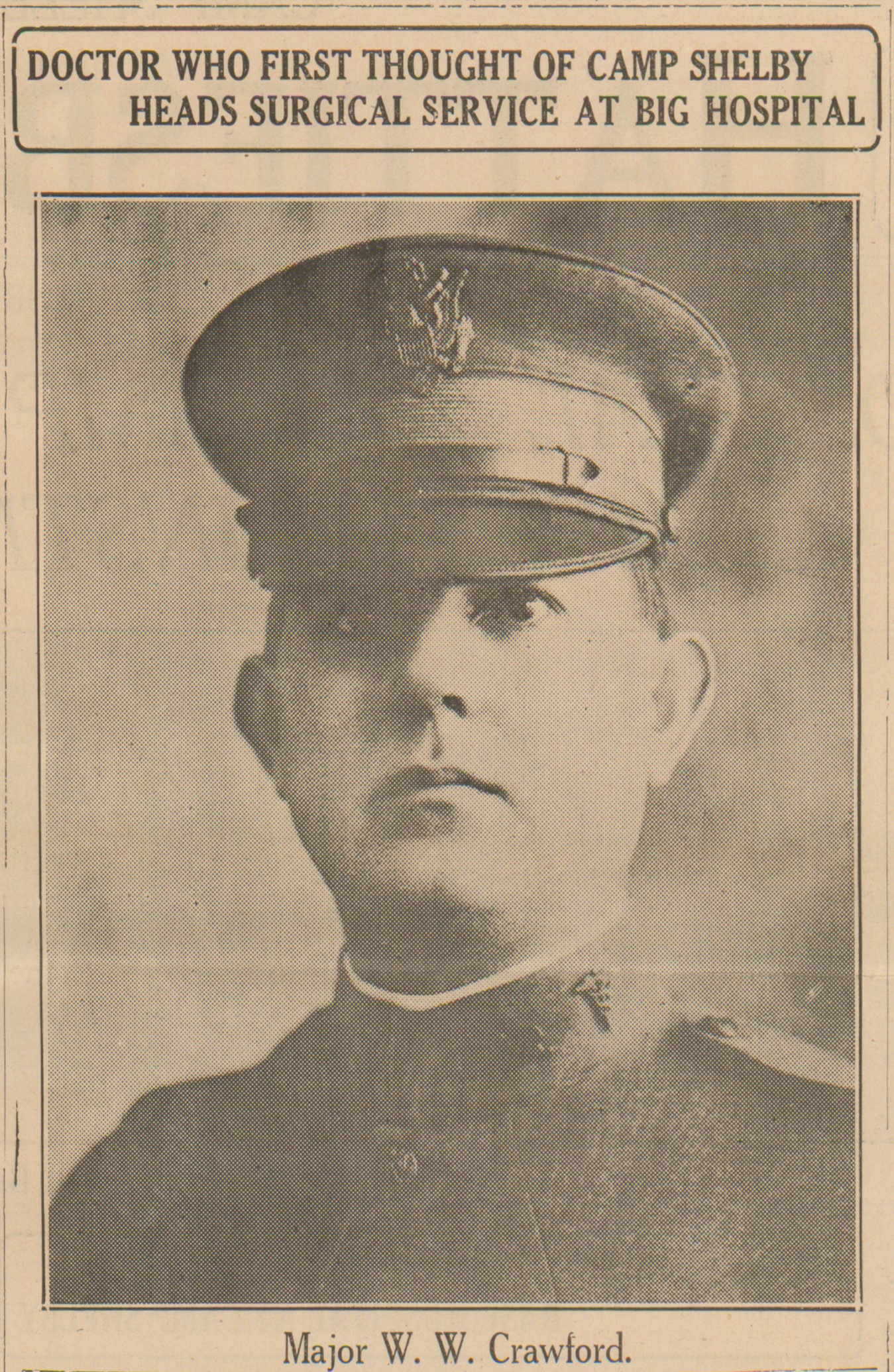
Walter Wesley Crawford was born in Magnolia, Pike County, Mississippi on March 21, 1872. During World War I, he served in France as a major in the medical corps of the United States Army. -
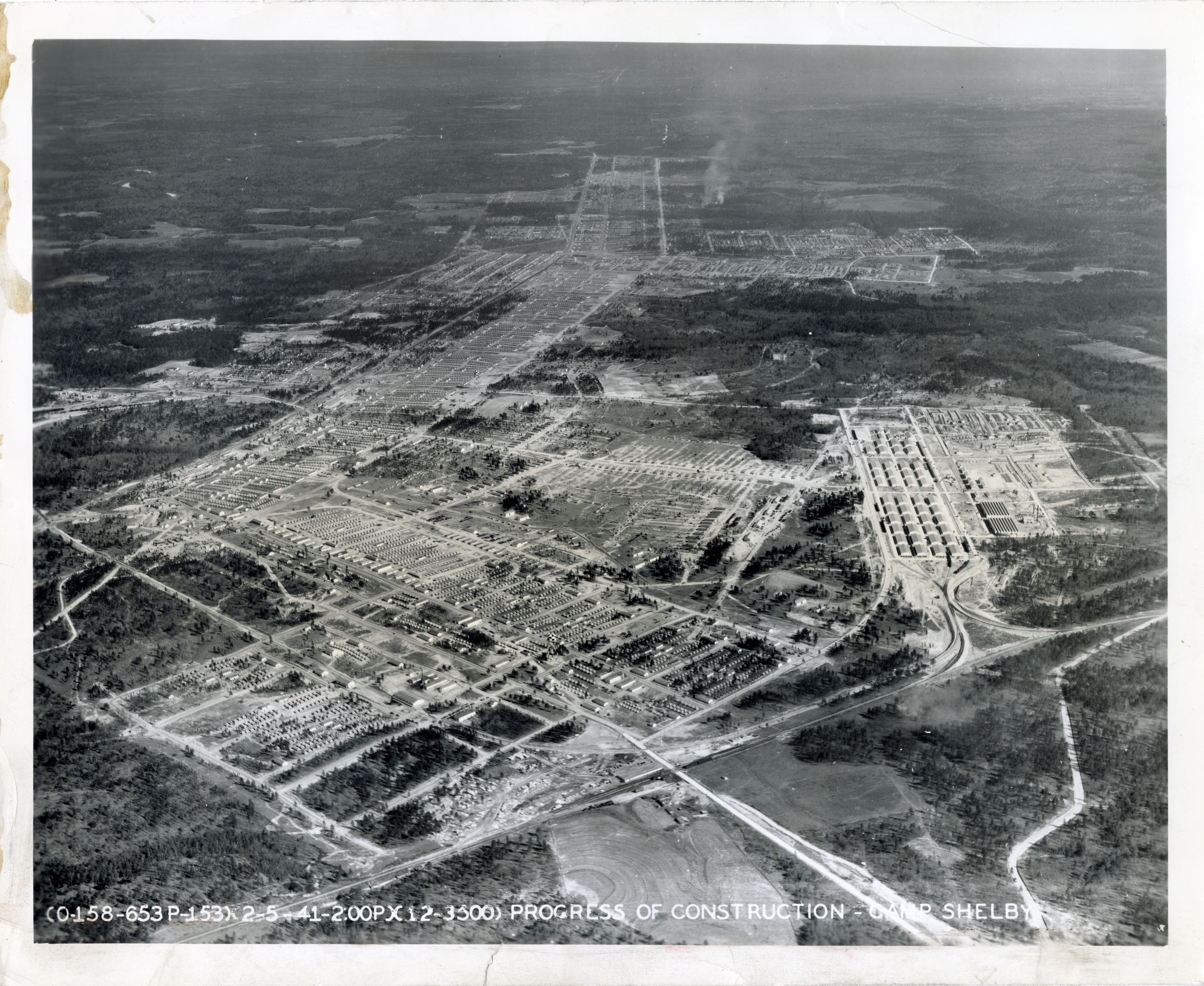
The terrain of Camp Shelby consists of dense woods and hills, ideal for training infantry and tank divisions.
-
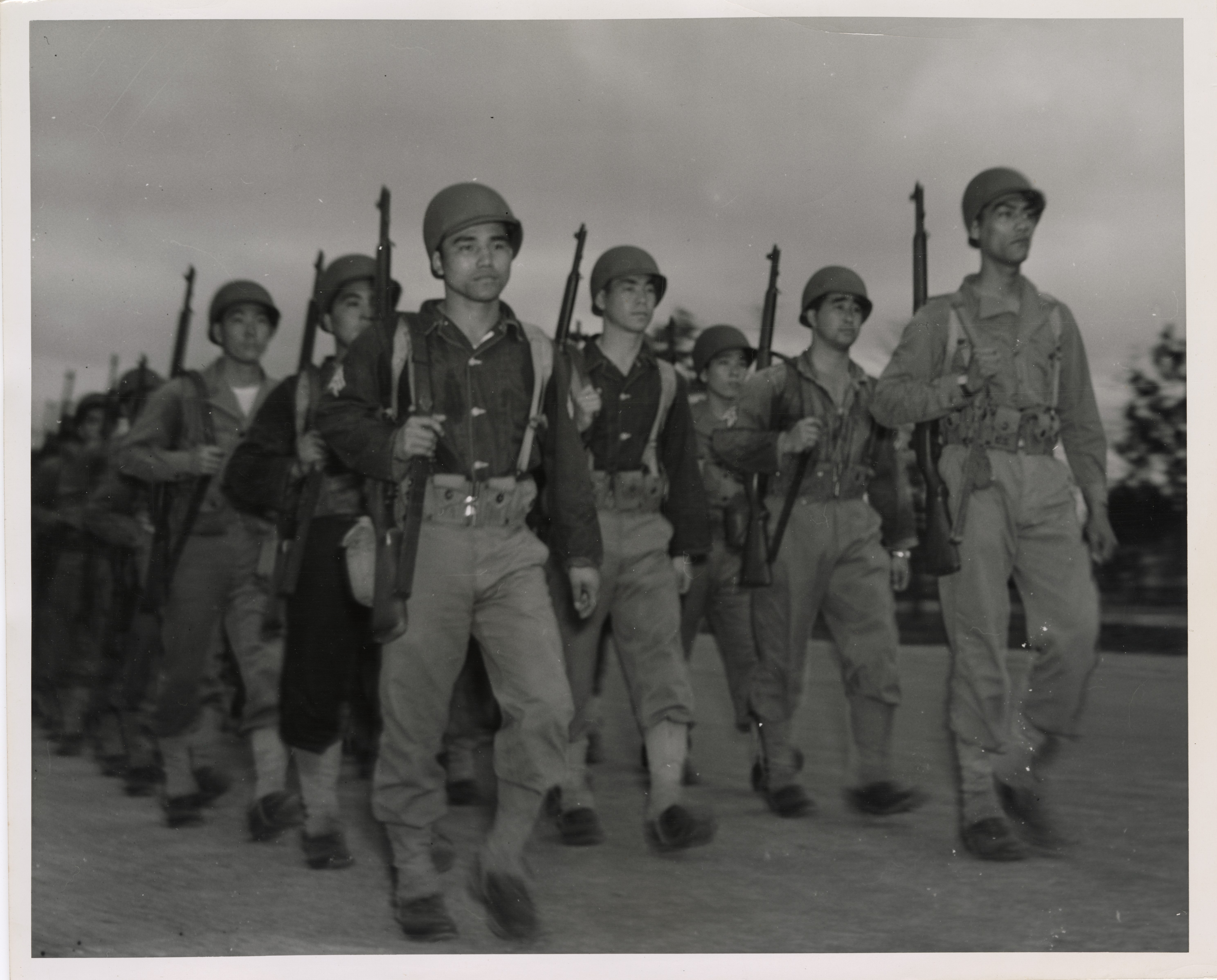
Second generation Japanese Americans trained at Camp Shelby during World War II. President Franklin Roosevelt ordered the relocation of 122,000 Japanese Americans to internment camps. -
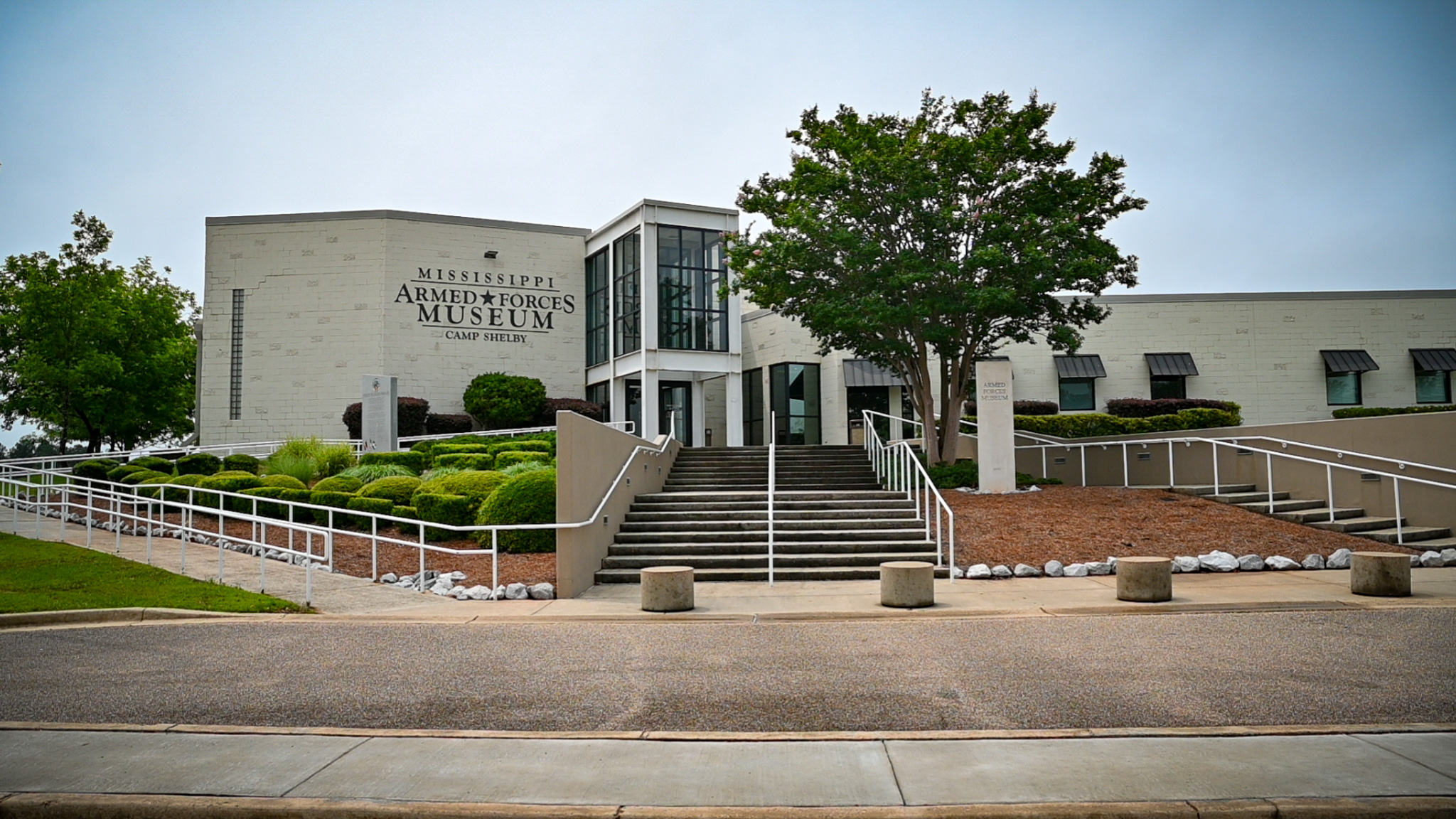
The Mississippi Armed Forces Museums was opened in 2001. It is located on the grounds of Camp Shelby and is open to public. -
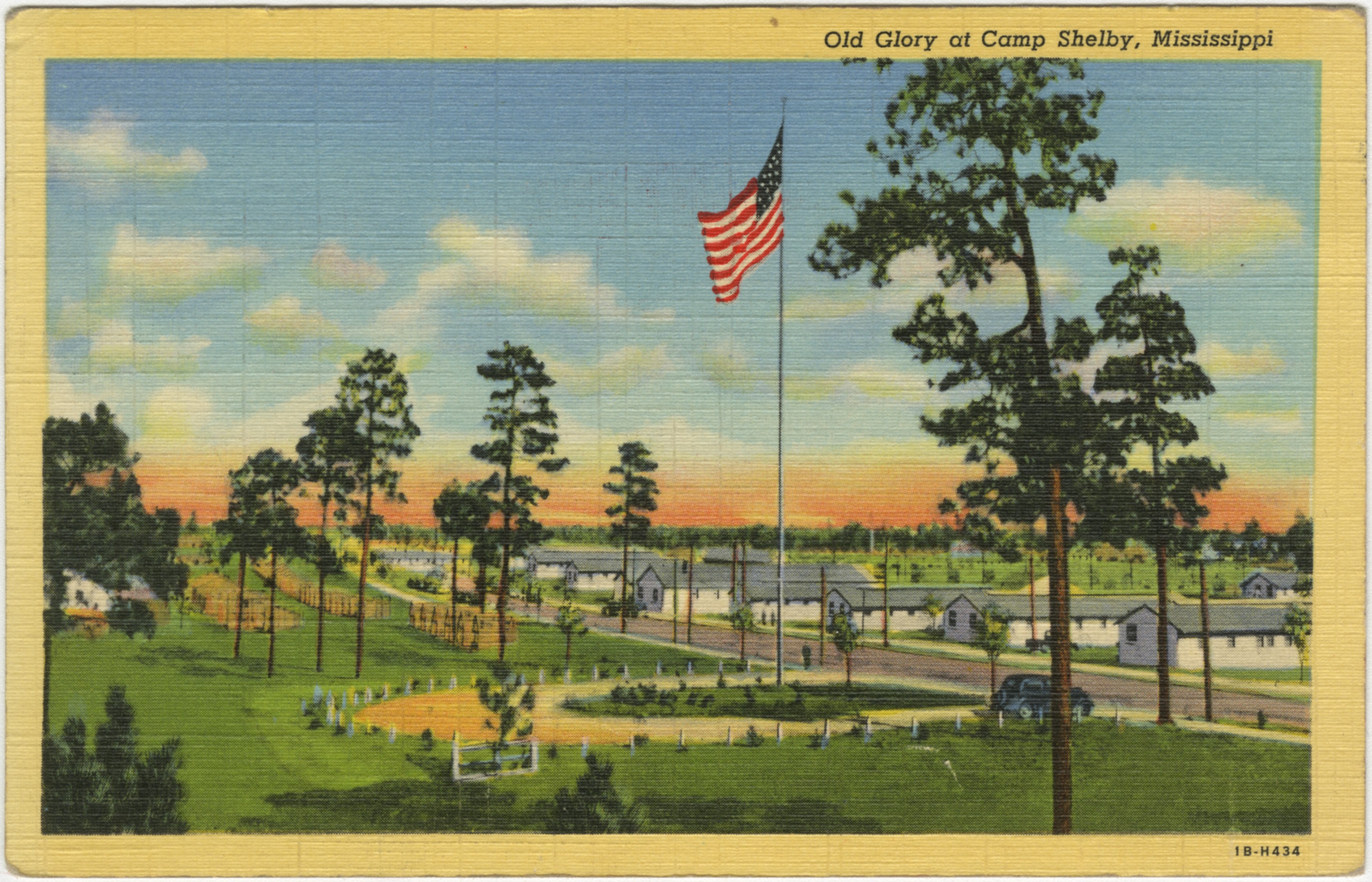
Old Glory over Camp Shelby
“Camp Shelby Joint Forces Training Center (CSJFTC).” Military Department of Mississippi Mississippi National Guard. Accessed April 19, 2024. https://www.ng.ms.gov/installations/cs.
“Camp Shelby Largest US Training Center.” The Clarion Ledger. Wednesday, May 7, 1969. Subject File, Camp Shelby 1947-1969.
Burns, Haskel. “Camp Shelby: 100 Years of History.” Hattiesburg American. July 8, 2017. https://www.hattiesburgamerican.com/story/news/local/2017/07/08/camp-shelby-100-years-history/420019001/.
Garamone, Jim. “World War I: Building the American Military.” U.S. Army. April 3, 2017. https://www.army.mil/article/185229/world_war_i_building_the_american_military.
Griffith, Frances. “700- Camp Shelby, Forrest County, Tour FEC.” Mississippi Department of Archives and History. Subject File, Camp Shelby 1917-1945.
Kirkpatrick, Charles E. “Strategic Planning for World War II The Victory Plan in Context.” Army History, no. 16 (1990): 17–21. http://www.jstor.org/stable/26302531.
Mitchell, Dennis J. A New History of Mississippi. University Press of Mississippi, Jackson. 2014.
Peoples, John. Dr. John Peoples. Read by the author. Mississippi Department of Archives and History, 2011. Sound recording, 51 min, 43 sec. https://da.mdah.ms.gov/series/conversations/speaknow/dr-john-peoples/detail/822972.
Williams, Rudi. “22 Asian Americans Inducted into Hall of Heros.” American Forces Press Service. June 28, 2000. https://web.archive.org/web/20151224041125/http://archive.defense.gov/news/newsarticle.aspx?id=45241.
Wilson, Woodrow. 1917. “Joint Address to Congress Leading to a Declaration of War Against Germany.” Records of the United States Senate. July 24, 2024. https://www.archives.gov/milestone-documents/address-to-congress-declaration-of-war-against-germany#transcript.
“JULY.” Camp Shelby Reveivelle. December 27, 2012. https://static.dvidshub.net/media/pubs/pdf_13280.pdf.
“The War Years (1941-1946): Serving the U.S.” National Veterans Network. https://nvnvets.org/442nd-regimental-combat-team/.
Schmidt, William Theodore. “The impact of the Camp Shelby mobilization of Hattiesburg, Mississippi.” Journal of Mississippi History. Vol XXXIX. No.1, 1976.
Smith, Charles. “Shelby Is Largest Field Training Site in Nation.” Clarion Ledger. (Jackson, MS), June 15, 1972. Subject File Camp Shelby 1970-1980.
“Daniel K. Inouye: A Featured Biography.” United States Senate. Accessed April 4, 2024. https://www.senate.gov/senators/FeaturedBios/Featured_Bio_Inouye.htm.
